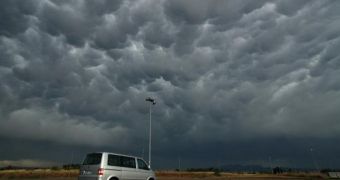A group of Spanish scientists from the UPC Lightning Research Group have been chasing storms for the past decade. Every time massive clouds threaten to bring about large amounts of rain, they set out to gather data on the phenomenon in their specially-equipped van. Their goal is to gain a deeper understanding of the events at work in the atmosphere, that lead to the creation of lightnings, some of the most intense bursts of energy our planet can produce.
“The lightning is generated by the cloud's electrification. Not all clouds can be electrified. In order to do so, they need to display a series of characteristics. In this case, we're dealing with summer clouds with a strong vertical development, clouds that can grow to heights of over 10 or 15 kilometers. Basically, the mechanisms of electrification are triggered by the interaction of the hydrometeors present in the cloud and the amount of water it contains,” says the director of the UPC Lightning Research Group, Joan Montanya, quoted by ScienceDaily.
“These mechanisms are not yet fully understood, though there are different theories. To ascertain the effects of lightning striking an electrical cable, an airplane or a wind turbine, you must first understand the parameters, in this case electric ones, relative to what the current is like, how it evolves, what electrical charge it has and so on. They can be measured directly, through a tower equipped to measure the current with which the bolt strikes, or indirectly, through electromagnetic fields,” the expert adds.
The UPC group's main area of interest is recording detailed accounts of how the electromagnetic fields develop, and how they influence clouds to produce powerful lightnings. In addition to the bright flashes of light they are famous for, lightnings also produce various amounts of X-rays and gamma rays, which are observed using a high-energy detector. The events themselves are initiated by streamers (movements of electrons between the upper and lower parts of the clouds), which are accompanied by a series of ionization and deionization processes. This is one of the events that the team is currently studying. They are still far from a breakthrough, but are collecting new data with each storm.

 14 DAY TRIAL //
14 DAY TRIAL //